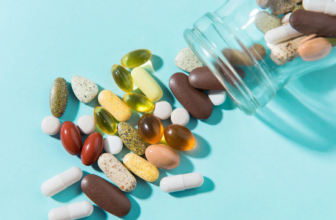Penicillins are a group of antibiotics that are bactericidal beta-lactam antibiotics and inhibit bacterial cell wall synthesis. It is a group of antibiotics which include penicillin G (intravenous use), penicillin V (use by mouth), procaine penicillin, and benzathine penicillin (intramuscular use). Penicillin antibiotics were among the first medications to be effective against many bacterial infections caused by staphylococci and streptococci. They are still widely used today, though many types of bacteria have developed resistance following extensive use. Penicillin, one of the first and still one of the most widely used antibiotic agents, derived from the Penicillium mold.
Types of Penicillins
Natural penicillins
- Penicillin G
- Penicillin K
- Penicillin N
- Penicillin O
- Penicillin V
β-lactamase-resistant
- Meticillin
- Nafcillin
- Oxacillin
- Cloxacillin
- Dicloxacillin
- Flucloxacillin
Aminopenicillins
- Ampicillin
- Amoxicillin
- Pivampicillin
- Hetacillin
- Bacampicillin
- Metampicillin
- Talampicillin
- Epicillin
Carboxypenicillins
- Carbenicillin
- Ticarcillin
- Temocillin
Ureidopenicillins
- Mezlocillin
- Piperacillin
β-lactamase inhibitors
- Clavulanic acid
- Sulbactam
- Tazobactam
| Narrow spectrum |
|
||||||||||
|---|---|---|---|---|---|---|---|---|---|---|---|
| Extended spectrum |
|
Mechanism of action of Penicillins
Bacteria constantly remodel their peptidoglycan cell walls, simultaneously building and breaking down portions of the cell wall as they grow and divide. β-Lactam antibiotics inhibit the formation of peptidoglycan cross-links in the bacterial cell wall; this is achieved through binding of the four-membered β-lactam ring of penicillin to the enzyme DD-transpeptidase. As a consequence, DD-transpeptidase cannot catalyze the formation of these cross-links, and an imbalance between cell wall production and degradation develops, causing the cell to rapidly die.
The enzymes that hydrolyze the peptidoglycan cross-links continue to function, even while those that form such cross-links do not. This weakens the cell wall of the bacterium, and osmotic pressure becomes increasingly uncompensated—eventually causing cell death (cytolysis). In addition, the build-up of peptidoglycan precursors triggers the activation of bacterial cell wall hydrolases and autolysins, which further digest the cell wall’s peptidoglycans. The small size of the penicillins increases their potency, by allowing them to penetrate the entire depth of the cell wall. This is in contrast to the glycopeptide antibiotics vancomycin and teicoplanin, which are both much larger than the penicillins. Gram-positive bacteria are called protoplasts when they lose their cell walls. Gram-negative bacteria do not lose their cell walls completely and are called spheroplasts after treatment with penicillin.
Penicillin shows a synergistic effect with aminoglycosides since the inhibition of peptidoglycan synthesis allows aminoglycosides to penetrate the bacterial cell wall more easily, allowing their disruption of bacterial protein synthesis within the cell. This results in a lowered MBC for susceptible organisms. Penicillins, like other β-lactam antibiotics, block not only the division of bacteria, including cyanobacteria, but also the division of cyanelles, the photosynthetic organelles of the glaucophytes, and the division of chloroplasts of bryophytes. In contrast, they have no effect on the plastids of the highly developed vascular plants. This supports the endosymbiotic theory of the evolution of plastid division in land plants.
Indications of Penicillins
- Penicillin is used to treat infections due to bacteria that are susceptible to the effects of penicillin.
- Common bacterial infections that penicillin is used for include infections of the
- middle ear,
- tonsils,
- throat,
- larynx (laryngitis),
- bronchi (bronchitis),
- Lungs (pneumonia),
- urinary tract, and
- skin.
- It also is used to treat gonorrhea
- Bacterial Endocarditis Prophylaxis
- Chlamydia Infection
- Helicobacter pylori Infection
- Lyme Disease – Arthritis
- Lyme Disease – Carditis
- Lyme Disease – Erythema Chronicum Migrans
- Lyme Disease
- Dental abscesses (as addition to surgical management).
- Typhoid and paratyphoid fever.
- Pneumonia
- throat infections
- tonsillitis
- typhoid
- Bronchitis
- Sinusitis
- A dental abscess with spreading cellulitis
- Prosthetic joint infections
- Helicobacter pylori eradication
- Urinary Tract Infection
- Tonsillitis/Pharyngitis
- Skin and Structure Infection
- Cutaneous Bacillus anthracis
- Anthrax Prophylaxis
Contraindications of Penicillins
- Clostridium difficile infection
- The decrease in the Blood-Clotting Protein Prothrombin
- Increased risk of bleeding due to a clotting disorder
- Liver problems
- Kidney disease with a reduction in kidney function
- Allergies to cephalosporins & beta-lactams
- Hypersensitivity to the active substance or to any of the excipients
- Patients with known hypersensitivity to cephalosporin antibiotics.
- History of severe hypersensitivity (e.g. anaphylactic reaction) to any other type of beta-lactam antibacterial agent (penicillins, monobactams, and carbapenems).
Side Effects of Penicillins
The most common
- Diarrhea
- Nausea
- Stomach pain
- Vomiting
- Gas
- Heartburn
- Headache
- Change in taste
- Hives
- Itching
Common
- Swelling of the face, throat, eyes, hands, lips, ankles, feet, or lower legs
- Rash
- Hoarseness
- Difficulty swallowing or breathing
- Peeling or blistering skin
- Yellowing of the skin or eyes
- Extreme tiredness
- Lack of energy
- Loss of appetite
- Unusual bleeding or bruising
Less common
- Cough
- fever or chills
- hoarseness
- lower back or side pain
- painful or difficult urination
- fast or chaotic heartbeats
- skin reactions such as painful rash, red or purple spots on the skin, or blisters
- trouble breathing
- swelling of your face, lips, tongue, or throat
Rare
- Fever with or without chills
- nausea and vomiting
- severe stomach cramps and pain
- skin rash and itching
- stomach tenderness
- unusual bleeding or bruising
- watery and severe diarrhea, which may also be bloody
- yellow eyes or skin
References










